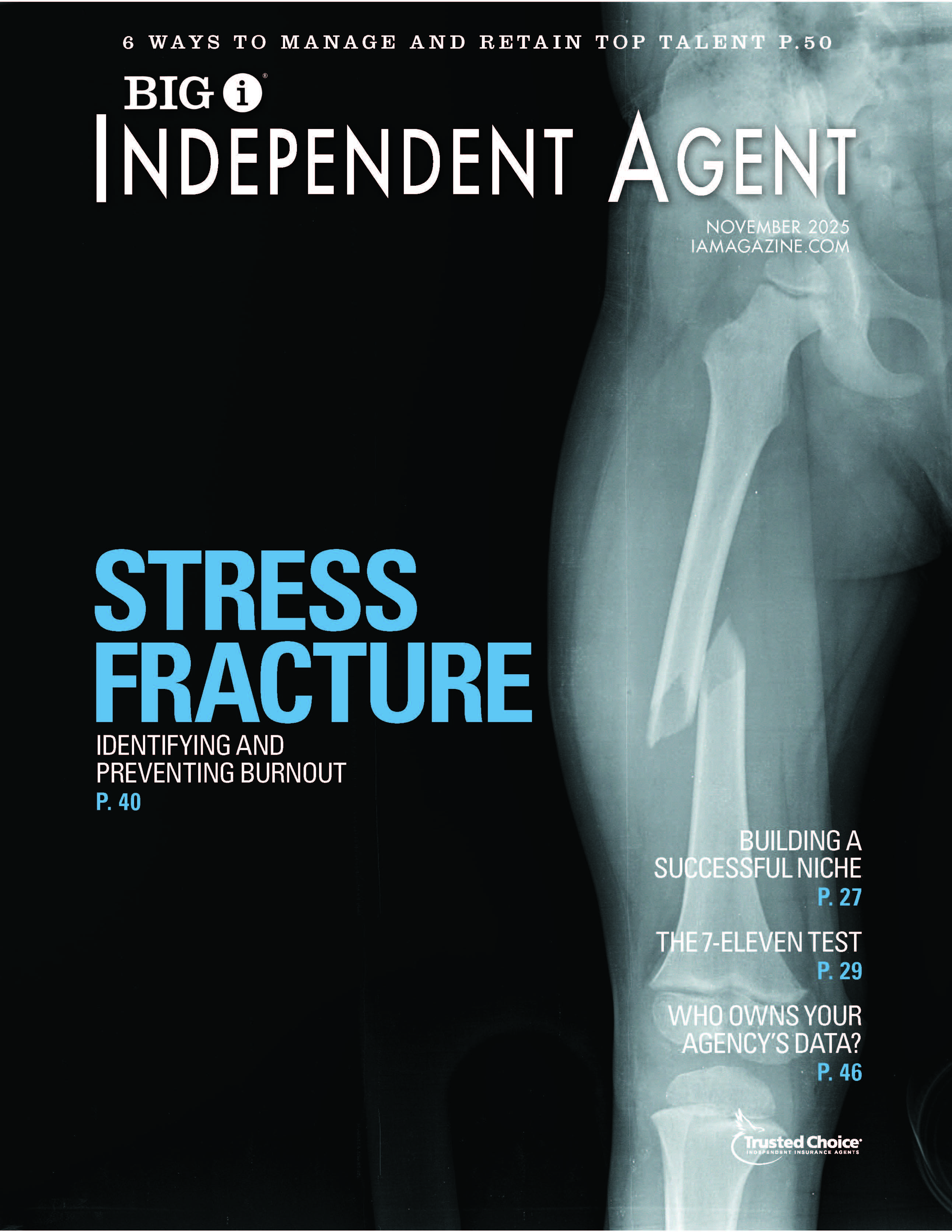Learning from Last Year’s Top E&O Mistakes
By: Matthew Davis
As 20th-century writer and philosopher George Santayana famously declared, “Those who cannot remember the past are condemned to repeat it.”
No argument here. Insurance underwriters and claim managers share the conviction that the surest way to predict the future is to study the past.
Let’s take a look at the most recent year of errors & omissions as a way of avoiding this year’s claims.
Process step. Recommendation errors have been on the wane for several years as a percentage of all claims. Unfortunately, they have been replaced by application errors and policy change errors—the latter of which have increased as much as recommendation errors have decreased.
Failure to comply with underwriting guidelines, add additional insureds or duplicate prior coverage are all noteworthy application loss drivers, yet roughly one-third of all application errors last year involved providing inaccurate or incomplete information to the carrier.
Given that the application should be based on information provided by your customer, that percentage should seem high. In fairness, though, the problem is not as often the agent’s mistake in completing an application—although that does happen—as it is an inability to persuade a court that the misrepresentation in question originated with the customer.
The solution: Be sure you can prove who supplied the information to the carrier, even if it’s done electronically. If your customer does not see, much less sign, the application, plan on losing that fight in court.
Policy change errors, on the other hand, tend to result from inadequate follow-up by the agency once a change is requested. The sale already has been made and the commission check cashed, so perhaps there is a lessened sense of urgency in fulfilling these requests. But judging by the rise in such claims last year, that relaxed attitude is as unwise as it is costly.
No matter how clerical or insignificant it may seem at the time, treat every request as essential to keeping the business.
Coverage type. As in years past, claims involving commercial general liability, commercial property, auto and homeowners policies continued to dominate the E&O landscape in 2018.
Though they do not present the same severity (resolution cost) as the other two coverage types, auto- and homeowners-related E&O claims continued to rise in 2018 as a percentage of all claims, as they did the prior year.
In all four categories, the most common error consisted of failure to procure the coverage requested, but after that the story diverges somewhat. In the case of homeowners policies, the next most numerous errors involved failure to duplicate prior coverage and providing inaccurate information to the carrier; in auto, inaccurate information to the carrier and failure to add an additional insured/loss payee; in CGL, failure to recommend a coverage type and failure to add an additional insured/loss payee; and in commercial property, failure to recommend a coverage type and inaccurate information to the carrier.
Claimant type. The great majority of claims are pursued by agency customers—90% on average over the past several years. In 2018, only about 7% of E&O claims were brought by carriers and other third parties.
Error type. 2018 saw some modest overall declines in the percentage of claims resulting from inaccurate or incomplete information being provided to the carrier and failure to recommend a coverage type, which made up 20% of all claims the year before.
Filling the gap were claims arising from failure to adequately explain policy provisions and failure to communicate the insurer’s requirements to the customer—cases in which the agency’s error is substantive rather than a simple failure of documentation.
These adverse developments are of interest because of the apparent similarity between them: The carrier’s expectations are not being conveyed to the customer. In contrast to some of the loss drivers discussed above, here we tend to see policy provisions that are significant to a particular customer—for example, the agency fails to bring “no torch-down roofing” or “no vacancy” to the customer’s attention.
That can be a problem even in an “order taker” state if you have taken on the burden of managing those communications through a special relationship or agency agreement.
Matthew Davis is a vice president and claims manager at Swiss Re Corporate Solutions and works out of the office in Kansas City, Missouri. Insurance products underwritten by Westport Insurance Corporation, Kansas City, Missouri, a member of Swiss Re.
This article is intended to be used for general informational purposes only and is not to be relied upon or used for any particular purpose. Swiss Re shall not be held responsible in any way for, and specifically disclaims any liability arising out of or in any way connected to, reliance on or use of any of the information contained or referenced in this article.
The information contained or referenced in this article is not intended to constitute and should not be considered legal, accounting or professional advice, nor shall it serve as a substitute for the recipient obtaining such advice.










